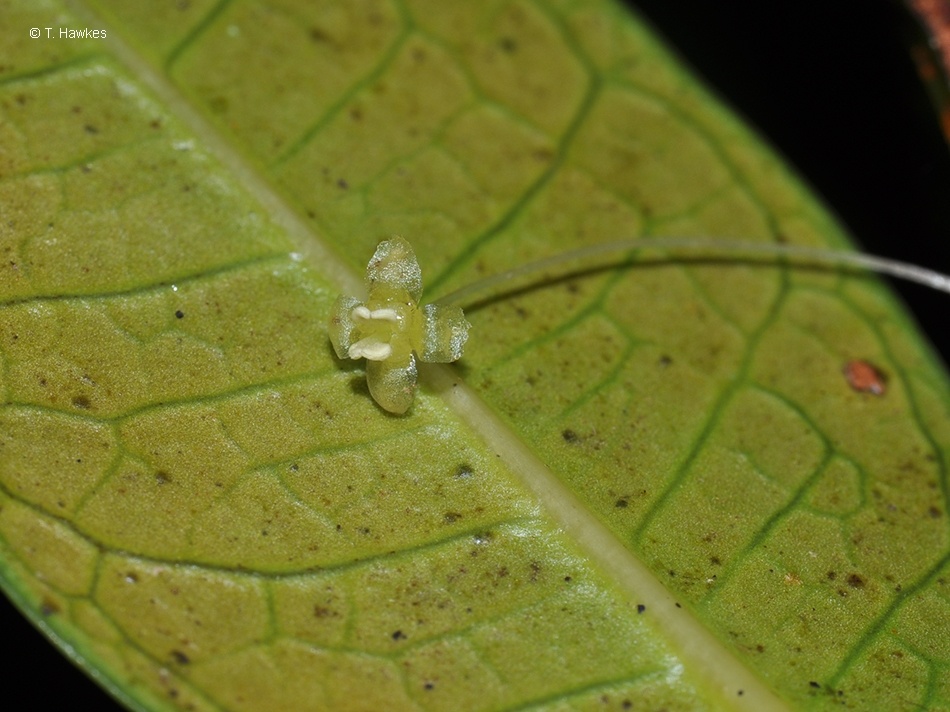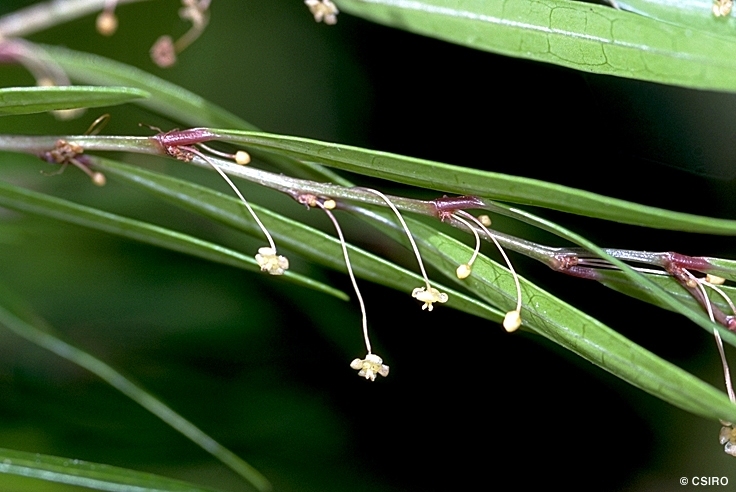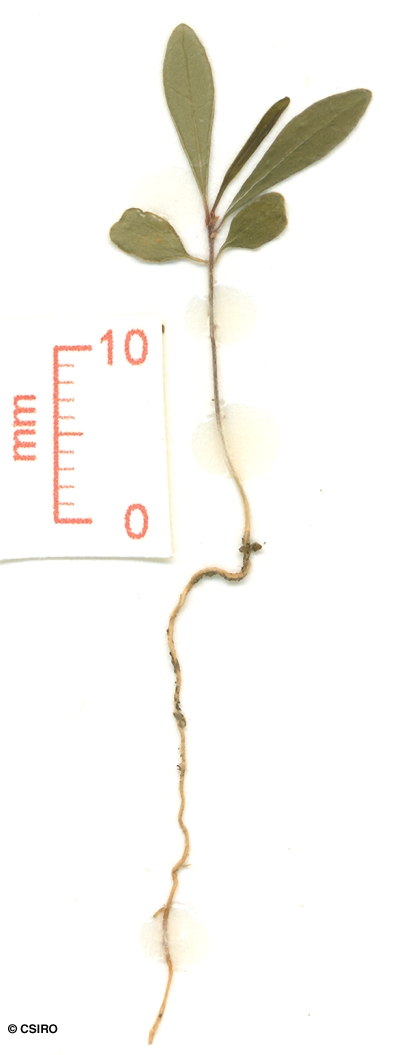Australian Tropical Rainforest Plants - Online edition
Phyllanthus brassii C.T.White







White, C.T. (1936) Proceedings of the Royal Society of Queensland 47: 81. Type: Queensland, Thornton Peak, 14 Mar. 1932, L. J. Brass 2303; holo: BRI?.
Phyllanthus
Usually flowers and fruits as a shrub about 1-2 m tall.
Leaves arranged on lateral shoots which resemble compound leaves. Leaves alternate and not spirally arranged on the twigs. Petioles with a central ridge and two channels on the upper surface. Lateral veins forming distinct loops well inside the blade margin. 'Normal Form' - leaf blades about 6-12 x 3-4.5 cm, petioles about 0.3-0.6 cm long. 'Rheophytic Form' - leaf blades linear to oblanceolate, about 6.5-8 x 0.9-1.2 cm, petioles about 0.4-0.6 cm long.
Cotyledons about 5 x 3 mm, petioles about 1.5 mm long. First leaf obovate to elliptic, apex obtuse, base cuneate to attenuate, leaf blades about 12 x 3 mm. At the tenth leaf stage: oil dots visible with a lens. Lateral veins forming loops inside the blade margin. Stipules broadly triangular, about 1 mm long. Seed germination time 15 days.
Endemic to Queensland, occurs in NEQ with an isolated occurrence in south-eastern Queensland. Altitudinal range in NEQ from 300-1300 m. Grows as an understory plant in mountain rain forest, usually on creek banks. This species, as currently recognized, occurs in two forms. A broad-leafed 'normal form' and a narrow-leafed 'rheophytic form'.





